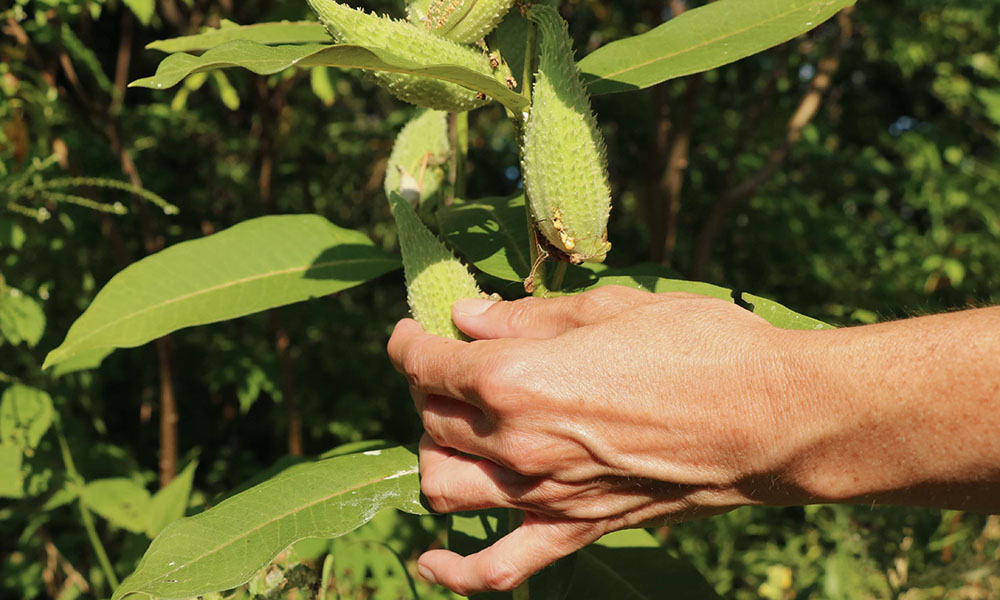Exploring the Value of Residents’ Relationships with Nature in the Winooski River Watershed
Nov. 30th 2022How do you assign value to nature—and how do you measure or characterize that value? As ecosystems face increasing stress and nature becomes more removed from our everyday experiences, researchers want to understand the many forms of nature’s value.
“In our part of the world, the value of nature is conventionally discussed either as purely economic or purely ethical,” said Eric Hagen, a former Field Naturalist master’s student at the University of Vermont. “This binary thinking excludes a whole range of relationships people have with nature that can’t be valued in economic terms but are more than just platitudes. These relationships with nature can significantly contribute to our sense of a good, meaningful, and worthwhile life, and they can’t be fully replaced if those parts of nature are lost.”
Hagen and Rachelle Gould, associate professor at the University of Vermont Rubenstein School, conducted an exploratory study of residents from Vermont’s Winooski River watershed to learn what kinds of relationships residents have with nature and the values associated with those relationships. The researchers published an Ecology and Society journal article and created a storyboard, or online collection of stories and photographs, to share findings from the project. The public-facing storyboard is intended to inspire and teach about the values of fostering diverse relationships with nature. Hagen has since also published Our Better Nature, a book to inspire both individual and collective action that includes stories from this research.
Hagen conducted 15 interviews with residents of the Winooski River watershed in central Vermont. The researchers chose people to interview who had a variety of personal relationships with nature, including farmers, natural resource professionals, hunters, foresters, business owners, teachers, members of local Indigenous Abenaki communities, and members of conservation groups. Hagen conducted each interview while walking in a natural setting of the resident’s choice to bring out specific feelings and stories tied to the place.
“I think every year you spend in the same place it gets deeper,” shared one of the participants while walking in the forest around their home. “I have been coming here since I was a small child, and I fell in love with it; now I feel a strong connection to it.”
The researchers characterized participant responses into 17 themes of relational values—values associated with relationships between people and nature—to analyze the results. Participants brought up stewardship and caring about the land as the most common themes.
The study also found a close connection between participants’ relationships with nature and their empathy for nature—the ability to have a supportive emotional response to the wellbeing of nature. About 20 percent of the time that participants discussed relational values, they also exhibited empathy. Every time a participant displayed empathy, they also referred to relational values.
The researchers further explain that perspective-taking may play a role in producing empathy. Perspective-taking is trying to see the world from another point of view. Though the concept is usually used in reference to other humans, a small but growing body of research, including the present study, explores the implications of taking the perspective of nature.
“All these terms are common sense when applied to people,” said Hagen. “With people that you have close relationships with, like your best friend, or a family member, you feel concerned for them when they're upset or hurt, and you feel good when they're happy and thriving. That’s what empathy is, and many people have the same emotional connection with different animals, plants, or whole ecosystems. So, this is common sense among people, and we’re trying to get people to talk about and understand this more in relation to nature.”
While there are some similarities and trends in the relationships people have with nature, the study findings revealed that these relationships are diverse and specific to the individual. In fact, the depth and importance of the different relationships’ participants had with nature were difficult to measure.
The researchers found three common qualities in the relational values cited: they can involve complex layering of different relationships with nature, they can involve important sources of personal meaning, and they can be difficult to articulate.
Participant relationships to nature were deep, complex, and fulfilling—illustrating how important facilitating human-nature relationships can be for overall wellbeing. Though this study did not focus on participants’ actions, results suggest that strong relationships and linked relational values may support greater stewardship of nature.
“The land is talking, in its many multitudinous ways,” said one of the interviewees. “But if we could listen better, we'd probably do a better job at living life. We’d learn a lot more about patience, and sharing, and we'd learn to recognize greed for what it is and waste for what it is.”
This research suggests that having a value-rich relationship with nature, using perspective-taking, and empathizing with nature are interrelated. These results help exemplify the breadth of ways people can relate to and feel connected to nature. Though this research did not focus on the behavioral implications of these connections, it seems that they could be powerful tools to mobilize people to address environmental problems.
“I’m also curious,” said Hagen, “if we could replace some of the consumptive value we get from nature—all of the resources we mine and harvest and extract—with relational values. Maybe we wouldn't feel like we need as much stuff if we could find fulfillment and meaning through building strong relationships, human and otherwise, and then give back by walking lighter on this Earth.”
Interview transcripts and interview questions are attached as appendices to the study. Excerpts from the interviews are included in the online interactive storyboard “A Shared Life: People and Biodiversity in Vermont" and in the book “Our Better Nature.”
 ecoNEWS VT
ecoNEWS VT